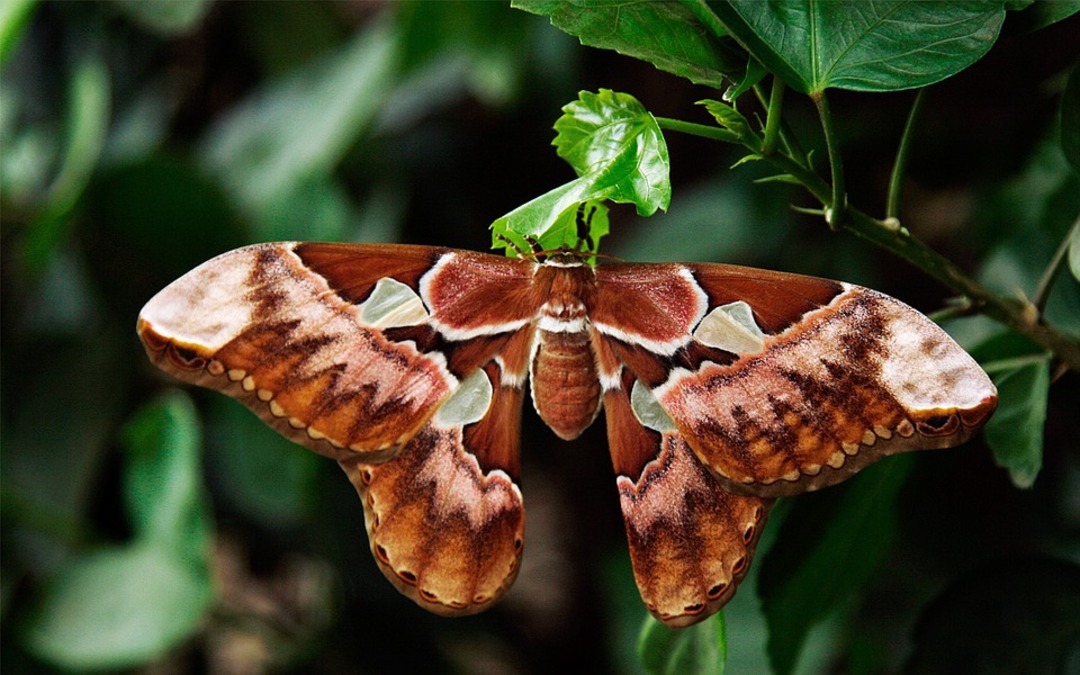-
Atlas moth, one of world's largest, detected in US for first time

A moth that has a wingspan of almost 25 cm was found in the United States for the first time, the Washington State Department of Agriculture has said, the Anews reported.
It also asked residents to report further sightings of the animal to be able to determine if there's an atlas moth population.
The moth was reported by a university professor last month first to the state agency, and following that it was sent to the US Department of Agriculture which identified it as the atlas moth, which is considered among the world's largest.
"This is a 'gee-whiz' type of insect because it is so large," Sven Spichiger, managing entomologist for the department, has said.
"Even if you aren't on the lookout for insects, this is the type that people get their phones out and take a picture of — they are that striking."

"This is normally a tropical moth. We are not sure it could survive here," Spichiger said.
"We hope residents will help us learn if this was a one-off escapee or whether there might indeed be a population in the area," he added.
Not much is known about the atlas moth, but the experts on the issue believe that the host plants of the animal are cherries and apples.
Drought blamed for dozens of cow poisoning deaths in northwest Italy
The Atlas moth, is a large saturniid moth endemic to the forests of Asia. The species was first described by Carl Linnaeus in his 1758 10th edition of Systema Naturae.
It is one of the largest lepidopterans, with a wingspan measuring up to 24 cm and a wing surface area of about 160 cm2.
As in most Lepidoptera, females are noticeably larger and heavier than males, while males have broader antennae.
levantnews-anews
You May Also Like
Popular Posts
Caricature
BENEFIT Sponsors BuildHer...
- April 23, 2025
BENEFIT, the Kingdom’s innovator and leading company in Fintech and electronic financial transactions service, has sponsored the BuildHer CityHack 2025 Hackathon, a two-day event spearheaded by the College of Engineering and Technology at the Royal University for Women (RUW).
Aimed at secondary school students, the event brought together a distinguished group of academic professionals and technology experts to mentor and inspire young participants.
More than 100 high school students from across the Kingdom of Bahrain took part in the hackathon, which featured an intensive programme of training workshops and hands-on sessions. These activities were tailored to enhance participants’ critical thinking, collaborative problem-solving, and team-building capabilities, while also encouraging the development of practical and sustainable solutions to contemporary challenges using modern technological tools.
BENEFIT’s Chief Executive Mr. Abdulwahed AlJanahi, commented: “Our support for this educational hackathon reflects our long-term strategic vision to nurture the talents of emerging national youth and empower the next generation of accomplished female leaders in technology. By fostering creativity and innovation, we aim to contribute meaningfully to Bahrain’s comprehensive development goals and align with the aspirations outlined in the Kingdom’s Vision 2030—an ambition in which BENEFIT plays a central role.”
Professor Riyadh Yousif Hamzah, President of the Royal University for Women, commented: “This initiative reflects our commitment to advancing women in STEM fields. We're cultivating a generation of creative, solution-driven female leaders who will drive national development. Our partnership with BENEFIT exemplifies the powerful synergy between academia and private sector in supporting educational innovation.”
Hanan Abdulla Hasan, Senior Manager, PR & Communication at BENEFIT, said: “We are honoured to collaborate with RUW in supporting this remarkable technology-focused event. It highlights our commitment to social responsibility, and our ongoing efforts to enhance the digital and innovation capabilities of young Bahraini women and foster their ability to harness technological tools in the service of a smarter, more sustainable future.”
For his part, Dr. Humam ElAgha, Acting Dean of the College of Engineering and Technology at the University, said: “BuildHer CityHack 2025 embodies our hands-on approach to education. By tackling real-world problems through creative thinking and sustainable solutions, we're preparing women to thrive in the knowledge economy – a cornerstone of the University's vision.”
opinion
Report
ads
Newsletter
Subscribe to our mailing list to get the new updates!






















